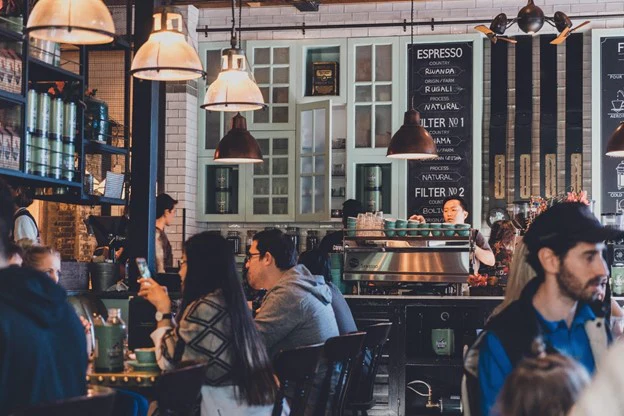
Coffee culture describes a social atmosphere or series of associated social behaviours that depends heavily upon coffee, particularly as a social lubricant. The term also refers to the diffusion and adoption of coffee as a widely consumed drink by a culture.
In the late 20th century, particularly in the Western world and urbanized centres around the globe, espresso has been an increasingly dominant form.
The formation of culture around coffee and coffeehouses dates to 14th century Turkey. In those times, coffeehouses, in Western Europe and the Eastern Mediterranean were traditionally social hubs as well as artistic and intellectual centres.
For example, Les Deux Magots in Paris, now a popular tourist attraction, was once associated with the intellectuals Jean-Paul Sartre and Simone de Beauvoir.
In the late 17th and 18th centuries, coffeehouses in London became popular meeting places for artists, writers, and socialites, and were also the centre for much political and commercial activity. Elements of today’s coffeehouses have their origins in early coffeehouses and continue to form part of the concept of coffee culture.
Where did the coffee break originate?
In the late 1800s, Norwe-gian immigrants arrived in the Stoughton area, attracted here by the availability of work in T.G. Mandt’s wagon factory. While the men were employed building wagons, local tobacco warehouse owners experienced a shortage of workers each harvest, when it was time to bring in the tobacco.

Mr. Osmund Gunderson decided to ask the Norwegian wives, who lived just up the hill from his warehouse, if they would come and help him sort the tobacco. The women agreed, if they could have a break in the morning and another in the afternoon, to go home and tend to their chores. Of course, this also meant they were free to have a cup of coffee from the pot that was always hot on the stove. Mr. Gunderson agreed and with this simple habit, the coffee break was born.
Modern Café Culture:
Some drugs are worse than others, and the world has decided that caffeine isn’t so bad.
Caffeine’s effect went much further than just giving the world a buzz. It changed attitudes about economics and working life, and it may have helped inspire ideas that laid the groundwork for industrialism. The first accurate timepieces were invented at just about the same that coffee became popular. At the same time, coffee, and tea – so-called “temperance beverages” – managed to replace alcohol in many people’s diets, markedly increasing productivity.
Today, we associate the coffee shop with things other than just drinking coffee. It’s an office space, a place to chat, somewhere to find a tasty bite to eat or a sense of comfort or even meet someone special. Coffee culture goes beyond a simple coffee shop.

Other aspects of coffee culture include the presence of free wireless Internet access for customers, many of whom do business in these locations for hours regularly.
Today coffee shops have placed just as much a focus on the ambience and aesthetic, as they have on the coffee they create, making the whole experience as enjoyable as possible.
In many urban centres in the world, it is not unusual to see several espresso shops and stands within walking distance of each other – or on opposite corners of the same intersection, typically with customers overflowing into parking lots. Thus, the term coffee culture is also used frequently in popular and business media to describe the deep impact of the market penetration of coffee-serving establishments.
SOURCE: Where the coffee break originated?